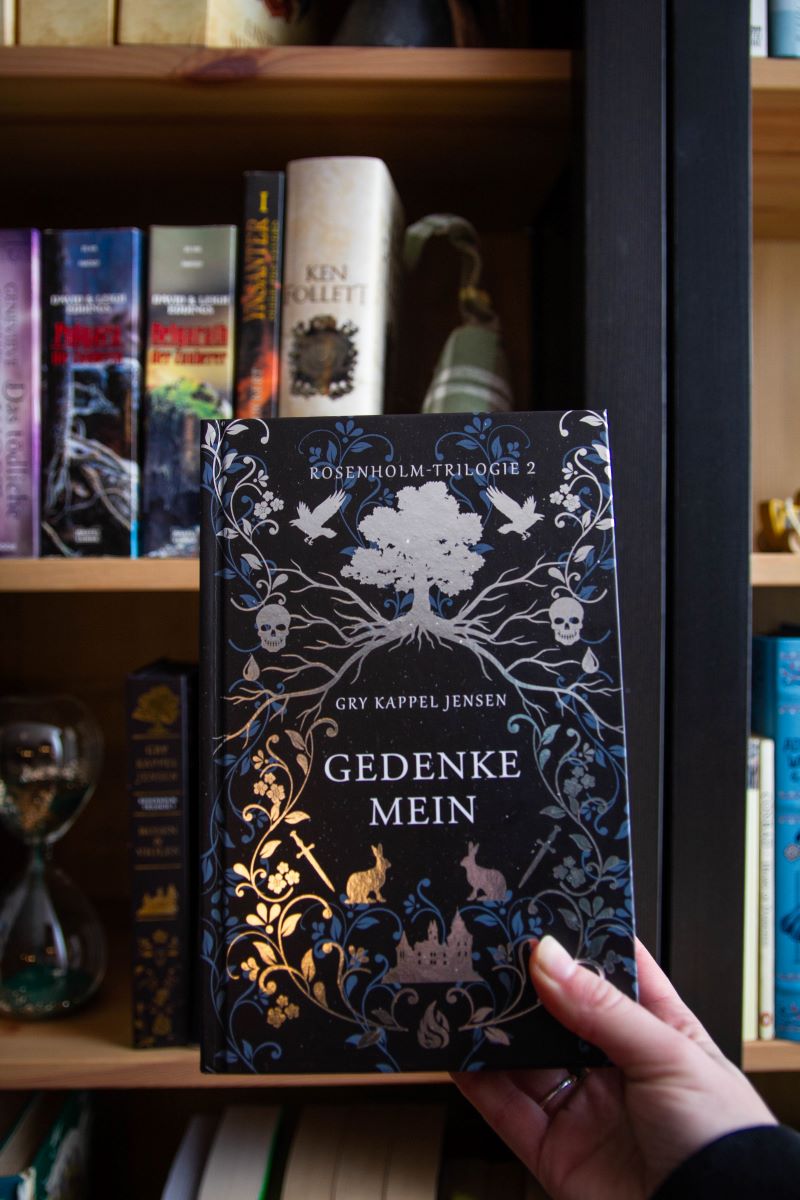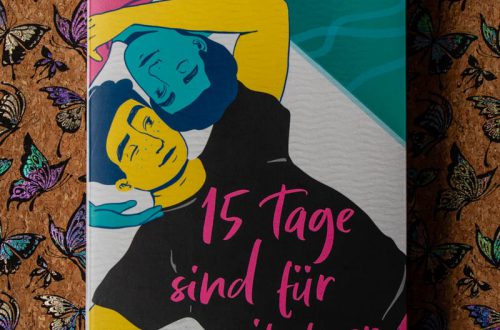
Book review: Gry Kappel Jensen – Forget Me Not (Rosenholm Trilogy 2)
It feels a little weird to start reviewing a book series with part 2, but it’s been a bit too long ago that I read part 1 to be able to write a review. If you haven’t read part 1, you should not read the review of part 2, because the summary includes spoilers for part 1.
Maybe if I ever find the time and motivation to re-read part 1, I’ll add a review of that one as well. But for now I’ll just do part 2 because I finished reading this one very recently.
Short info: YA fantasy with queer characters
Quick plot summary:
For Kirstine, Malou, Victoria and Kamille, their second year at Rosenholm is about to start. The year before, they learned about the death of a student called Trine, long before their time. They tried to solve the mystery behind her murder, but almost lost their own lives in the course of events when trying to fight one of their fellow students, Vitus. Vitus was killed, yet Trine’s murderer is still unknown. The girls promised Trine to solve the mystery, which is their aim for the upcoming school year. Research shows them that Trine had a younger sister, Leah. They contact her, hoping that Leah could help them find out the identity of Trine’s boyfriend, who’s supposedly also the person who killed her. But Leah turns out to be less of a help than a threat to the girls.
In Rosenholm, times have changed as well. The old principal has left school. Instead, their teacher Jens has taken over the position, supported by Zlavko as vice principal. With the new lead, times at Rosenholm are slightly changing. And so are the girls. More and more secrets come out – some connected to Trine, some connected to the four protagonists.
The Rosenholm trilogy can most likely be categorized as Young Adult Fantasy. It’s full of magic and witchcraft, references to Norse mythology and old norse practics and rituals, which reflects the author’s fields of studies (history and nordic languages – the author herself is Danish by the way). A lot about this series is fairly dark, as some of the rituals might involve sacrifices, there partly are explicit descriptions of injuries and blood magicians obviously make use of blood to use their magic. The atmosphere in the first book was still a bit lighter if I remember correctly, while Forget Me Not gets a bit more tense in my personal opinion.
The books are written with alternating point of views which include all four protagonists. Each part includes a date and time so that it’s easy to follow the time line of events throughout the school year – which is sometimes crucial because some actions happen more or less at the same time and through switching perspectives the reader finds out what different characters might’ve experienced in different moments. It’s still a third person narrator, but limited on the character that is currently in focus. The narration is supported by letters, invitations and other documents the girls receive or find – or will find later in the book.
Speaking of the characters, there is a clear development of all protagonists throughout the series. While in part one, the four girls were introduced and their friendship was established, part two goes deeper. It’s shown that the supposedly close friends indeed keep secrets from each other, that they even lie to each other and that, in some situations, their friendship seems not as deep as they’d probably like to have it.
For me, the first two Rosenholm books were hard to put away. Once I had started, I couldn’t stop reading. Probably because I like the magical setting, but also the connection to nordic myths and traditions and all that. I like the protagonists with all their small and bigger faults (of course there’s always this one character I like less than the others).
Plot-wise I personally like the way things develop in this book. There are these moments where you feel like you found a hint and might be about to solve the mystery and then, somehow, a plot-twist arrives. In the end of book two, I was so confused. I mean … it feels pretty evident who might be Trine’s murderer, but I still expect some weird turn of events in book three. Also to me it feels like a good mix of character- and plot-driven. I didn’t have the feeling that the author was rushing from one plot point to another, neither did I feel like the characters took over the lead and were the main drive for the events. And to me it felt quite medium-paced. Neither did events feel rushed, nor did they drag on forever.
The books are originally written in Danish and I am reading their German translations. To me, they feel very smooth. Smoother than some translations of English books. So big thumbs up for the translators Meike Blatzheim and Sarah Onkels.
My literal only problem with this book is that Kirstine will always be Kristine for me. It took me the entire first book to notice that nope, that one time I got the name right wasn’t a typo, but that her name had been Kirstine through the entire story. And guess which name I read when I started reading book 2 🤭
Anyway, I guess I’m off to preordering the third part. Before the publishing date was announced, I considered picking up Danish on Duolingo – but even though the Scandinavian languages are close to German, I guess I wouldn’t have learned a decent amount of Danish fast enough 😂 (I decided to go for Swedish instead).



